Table of Contents
Come join us now, and enjoy playing your beloved music and browse through great scores of every level and styles!
Can’t find the songbook you’re looking for? Please, email us at: sheetmusiclibrarypdf@gmail.com We’d like to help you!
Sorabji: In the Hothouse (from Two Piano Pieces) sheet music, Noten, partitura, spartiti 楽譜

Best Sheet Music download from our Library.

Please, subscribe to our Library.
If you are already a subscriber, please, check our NEW SCORES’ page every month for new sheet music. THANK YOU!
Browse in the Library:
Or browse in the categories menus & download the Library Catalog PDF:
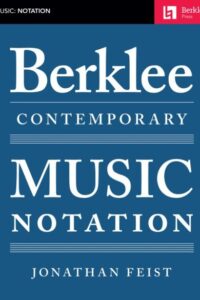
Who was Sorabji?
Kaikhosru Shapurji Sorabji: The Hermit of Modernist Maximalism
In the often-crowded pantheon of 20th-century composers, Kaikhosru Shapurji Sorabji (1892-1988) occupies a unique and enigmatic niche. A composer of staggering ambition, labyrinthine complexity, and self-imposed isolation, Sorabji crafted some of the most monumental, technically demanding, and stylistically idiosyncratic music ever conceived. His work, largely ignored during his lifetime and still challenging audiences today, represents a singular path through modernism – one defined by maximalism, intricate ornamentation, transcendental virtuosity, and a fierce, almost hermetic, independence.

Biography: A Self-Forged Identity
- Birth & Heritage: Born Leon Dudley Sorabji on August 14, 1892, in Chingford, Essex, England. His father was a Parsi engineer from India (thus the Persian-derived name Sorabji), and his mother was English-Spanish. This mixed heritage profoundly shaped his sense of identity, though he felt alienated from both cultures.
- The Name: Around 1914, he legally changed his name to Kaikhosru Shapurji Sorabji. “Kaikhosru” and “Shapurji” were Persian names chosen for their resonance and connection to ancient Persian history and Zoroastrianism, reflecting his deliberate construction of a unique persona.
- Musical Formation: Largely self-taught. He received some piano lessons in his youth but had no formal composition training. His musical education came through voracious listening, score study (especially Bach, Liszt, Busoni, Debussy, Ravel, Scriabin, Szymanowski, Medtner), and wide reading in literature, philosophy, and the occult.
- Early Career & Criticism: Worked as a music critic (under the pseudonym “S. Godfrey”) for outlets like The New Age and The New English Weekly from the 1910s to the 1930s. His critiques were famously acerbic, insightful, and often scathing, particularly targeting English musical provincialism and composers he deemed mediocre (which was most of them).
- The Recluse: Deeply disillusioned by the musical establishment and critical reception to his early performances (which were rare and often controversial), Sorabji gradually withdrew from public musical life starting in the late 1930s. After his mother’s death in 1940, he retreated almost completely to his secluded home “The Eye” in Corfe Castle, Dorset, where he lived with his companion, Reginald Norman Best, until his death. He forbade performances of his music for decades.
- The Ban Lifted: In 1976, pressured by a growing underground interest spearheaded by pianists like Yonty Solomon and Alistair Hinton (who later became his literary executor), Sorabji reluctantly lifted the ban on performances, provided he approved the performer.
- Death: Sorabji died on October 15, 1988, in Winfrith Newburgh, Dorset, leaving behind a colossal legacy of unpublished manuscripts.
Works: Monuments of Sound

Sorabji’s output is vast and overwhelmingly dominated by solo piano music, though he also composed orchestral works, chamber music, organ symphonies, and songs. His works are renowned for their extreme length, density, and technical difficulty, pushing the boundaries of playability.
- Key Masterpieces:
- Opus Clavicembalisticum (1930): His most famous (or infamous) work. A colossal 4+ hour piano epic in 12 movements (including fugues, passacaglias, toccatas, cadenzas), often considered one of the most challenging solo piano works ever written. A summit of contrapuntal complexity and virtuosic display.
- Symphonic Variations for Piano (1935-37): Another monumental work, exploring vast variation forms over an extended duration.
- Sequentia Cyclica super “Dies iræ” ex Missa pro Defunctis (1948-49): A massive cycle of 27 variations on the “Dies Irae” chant, demonstrating his intricate contrapuntal and transformative skills.
- 100 Transcendental Studies (1940-44): True to their name, these studies explore extreme technical and expressive demands far beyond those of Liszt or Chopin.
- Symphonies for Solo Piano: Several exist, including his Symphony No. 2 (“Jāmī”), blending orchestral textures and scope onto the piano.
- Gulistān – Nocturne for Piano (1940): A prime example of his lush, perfumed, and incredibly intricate “Persian”-inspired style.
- Concerti: He wrote several for solo piano and orchestra (e.g., Concerto per suonare da me solo e senza orchestra, per divertirsi), which are symphonic in scale and require superhuman virtuosity.
- Symphonies for Organ: Vast, complex works exploring the sonic possibilities of the instrument.
Analysis of Style: A Universe of Complexity
Sorabji’s style is instantly recognizable yet difficult to categorize. It synthesizes diverse elements into a unique and overwhelming whole:
- Maximalism: This is the defining characteristic. Sorabji embraced extremes:
- Length: Works lasting several hours are common.
- Density: Highly polyphonic textures, often with multiple independent melodic lines woven together in complex counterpoint (influenced by Bach, Busoni).
- Virtuosity: Demands transcendental technique – cascades of notes, complex polyrhythms, wide leaps, immense power, and extreme delicacy. He wrote as if the pianist had four hands.
- Ornamentation: Baroque-like ornamentation (trills, mordents, turns, grace notes) is ubiquitous, often layered and integral to the texture, creating shimmering, kaleidoscopic surfaces (influenced by Scriabin, Szymanowski, Middle Eastern/Persian music).
- Dynamic Range: From barely audible whispers to thunderous, percussive climaxes.
- Harmony: A complex fusion:
- Rooted in late-Romantic chromaticism (Scriabin, Szymanowski, early Schoenberg).
- Freely employed dissonance, clusters, and intricate chord structures.
- Often retained a sense of tonal centers or polarity, even amidst dense chromaticism (unlike strict atonality).
- Incorporated modal inflections, sometimes evoking Persian or Spanish flavors.
- Rhythm: Highly complex and fluid:
- Frequent use of polyrhythms (multiple simultaneous rhythms), cross-rhythms, and nested tuplets (triplets within quintuplets, etc.).
- Tempo often fluctuates wildly, requiring immense control.
- A sense of improvisatory freedom within highly structured forms.
- Form: Often large-scale, complex, and idiosyncratic:
- Favored variations (passacaglias, chaconnes), fugues, toccatas, and intricate multi-movement structures (like the Opus Clavicembalisticum).
- Forms were often expansive and cumulative, building through layered repetition and intensification rather than traditional development.
- Architecture was paramount, even in the densest textures.
- Influences (Assimilated, Not Imitated):
- Ferruccio Busoni: The most profound influence. Busoni’s ideas of “Young Classicism,” the transcendental potential of the piano, the fusion of Bachian counterpoint with modern harmony, and the concept of “Junge Klassizität” resonated deeply. Sorabji dedicated his Opus Clavicembalisticum to Busoni’s memory.
- Franz Liszt: Virtuosity, thematic transformation, large-scale forms, and the symphonic poem concept translated to piano.
- J.S. Bach: Contrapuntal mastery, structural rigor, and the use of forms like fugue and passacaglia.
- Alexander Scriabin: Mysticism, harmonic language, dense textures, and ecstatic climaxes.
- Karol Szymanowski: Sensuous harmony, intricate ornamentation (especially in the “Persian” inspired works like Métopes and Masques), and voluptuous textures.
- Debussy & Ravel: Color, texture, exoticism, and pianistic refinement.
- Mediterranean & Persian Cultures: While not authentically recreating these styles, he evoked their essence through ornamentation, melodic turns, and titles (Gulistān, Jāmī), reflecting his fascination with his Persian heritage and the wider Orient.
- Aesthetic: Sorabji’s music aimed for:
- Transcendence: Pushing beyond perceived limits of instrument, performer, and listener.
- Luxuriance & Opulence: A rich, sensual, almost decadent sound world.
- Intellectual Rigor: Underlying the sensual surface was meticulous structural planning.
- Individualism: A complete rejection of prevailing trends (serialism, neoclassicism, minimalism) in favor of his own uncompromising vision.
Legacy: From Obscurity to Cult Status
Sorabji’s legacy is complex and evolving:
- Decades of Neglect: His self-imposed exile and performance ban meant his music was virtually unknown outside a tiny circle for nearly 40 years. Manuscripts were inaccessible, unplayable, and unpublished.
- The Pioneers (1970s-): The lifting of the ban sparked interest. Pianists like Yonty Solomon, Michael Habermann, Geoffrey Douglas Madge (who made the first complete recording of Opus Clavicembalisticum in 1977), and later Marc-André Hamelin, Jonathan Powell, Fredrik Ullén, and Ronald Stevenson began the monumental task of learning, performing, and recording his works. This required immense dedication and technical prowess.
- Publication & Scholarship: The Sorabji Archive, established by Alistair Hinton (Sorabji’s literary executor), has been crucial in cataloging, editing, and facilitating the publication of scores (primarily by Dover Publications and The Sorabji Music Archive). Scholarly work is gradually increasing.
- Recordings Renaissance: The CD era and digital distribution (YouTube, streaming) have been transformative. Dedicated labels (Altarus, BIS, Toccata Classics, Piano Classics) have released numerous recordings, making this once-inaccessible music available globally. Complete cycles of the 100 Studies and other major works are underway.
- The Cult & The Challenge: Sorabji remains a “composer’s composer” and a cult figure. His music is not mainstream concert fare due to its extreme demands and duration. However, it commands deep respect and fascination among pianists, composers, and listeners drawn to its unique sound world and uncompromising vision. He is seen as the ultimate iconoclast, forging a path utterly independent of 20th-century musical fashions.
- Influence: His direct influence on other composers is hard to pinpoint due to his obscurity, but he stands as a powerful symbol of uncompromising artistic integrity and the exploration of extreme complexity and virtuosity. Composers interested in maximalism, intricate counterpoint, or pushing pianistic limits inevitably encounter his shadow.
- Copyright Controversy: The complex copyright status of his works (involving the Sorabji Archive and publishers) has sometimes been a point of friction within the community of performers and scholars seeking access.
Sorabji: The Solitary Giant
Kaikhosru Shapurji Sorabji was a true original. He inhabited a musical universe entirely of his own making, synthesizing diverse influences into a style characterized by unparalleled complexity, sensuous opulence, and transcendental ambition. His deliberate withdrawal from the world ensured decades of obscurity, but the dedication of pioneering performers and the power of recording technology have brought his extraordinary soundscapes to light. While his music remains challenging and demanding, it offers unparalleled rewards: a journey into a world of labyrinthine beauty, overwhelming power, and intellectual fascination. Sorabji stands as a testament to the power of an utterly individual artistic vision, uncompromising in its scope and ambition, a solitary giant whose monumental creations continue to challenge and inspire. He redefined the possible for the piano and left a legacy that continues to unfold as more performers dare to scale his musical Himalayas.
“In the Hothouse” is one of Sorabji’s most evocative and frequently performed works, serving as a perfect entry point into his dense, sensuous sound world. Here’s a detailed look at this fascinating piece:
Context: Two Piano Pieces (1918)
- Composed: 1918 (early in Sorabji’s career, age 26).
- Publication: First published in 1920, making it one of the earliest Sorabji works available in print.
- The Pair: “In the Hothouse” is paired with “Toccata” – a contrasting, hyper-virtuosic, and structurally complex piece showing his Busoni/Liszt influences. “In the Hothouse” offers the sensual, atmospheric counterpoint.
- Significance: Represents Sorabji’s early mastery of texture, harmony, and evocative atmosphere. It predates his gargantuan works but already displays his unique voice.
“In the Hothouse”: A Sensory Immersion
- Title & Imagery: The title instantly conjures an environment: humid, lush, teeming with exotic, overripe plant life, heavy perfumes, and stifling, enclosed heat. Sorabji translates this sensory overload into sound.
- Form & Structure: Relatively free and rhapsodic. It unfolds as a continuous, organic stream of consciousness rather than adhering to strict classical forms. Think of it as an elaborate, decadent arabesque.
- Style & Character:
- Extreme Sensuality: This is the defining feature. The music drips with lush, complex harmonies and suffocatingly rich textures.
- Harmony: Deeply chromatic, rooted in late Scriabin and early Szymanowski. Expect dense, constantly shifting chords: augmented harmonies, whole-tone inflections, unresolved dissonances creating tension, and sudden moments of surprising consonance like shafts of light piercing foliage. It avoids traditional tonality but gravitates around implied centers.
- Texture: Thick, layered, and constantly in motion. Tremolos, trills, rapid filigree (ornamental passages), and cascading arpeggios create a shimmering, humid haze. Melodies are often embedded within this dense undergrowth rather than standing clearly apart. The writing often requires the pianist to sustain multiple layers simultaneously.
- Rhythm: Fluid and flexible, often obscured by the sheer density of notes and ornamentation. Rubato (expressive tempo fluctuations) is essential. While less overtly complex polyrhythmically than his later works, the rhythmic flow feels organic and improvisatory.
- Dynamics & Articulation: Wide dynamic range, often shifting suddenly between extremes (e.g., thunderous climaxes collapsing into fragile whispers). Articulation varies from sharp staccatos to legatissimo passages that blur together. Pedaling is crucial for sustaining the harmonic haze and creating resonance.
- Ornamentation: Quintessential early Sorabji. Trills, mordents, turns, and grace notes are not mere decoration; they are the texture, creating constant flickering movement and contributing to the claustrophobic, teeming atmosphere. This foreshadows the intricate ornamentation dominating his mature style.
- Emotional Landscape: Evokes opulence, decadence, languor, mystery, stifling heat, hidden dangers, and overwhelming sensory stimulation. There’s a sense of beauty bordering on the grotesque due to its sheer intensity.
Influences Audible in “In the Hothouse”
- Scriabin (Primary): The harmonic language (mystic chords, unresolved dissonance, ecstatic climaxes), the sensual atmosphere, and the use of trills/tremolos are deeply indebted to Scriabin’s late sonatas and poems (e.g., Vers la flamme). Sorabji pushes Scriabin’s decadence further.
- Szymanowski: The opulent textures, perfumed harmonies, and “orientalist” exoticism (though abstracted here) strongly recall Szymanowski’s “Métopes” or “Masques,” which Sorabji admired deeply.
- Debussy: The focus on atmosphere, texture, and harmonic color (whole-tone scales, parallel chords) shows Debussy’s influence, though rendered with far greater density and intensity.
- Ravel: The virtuosic filigree and lush harmonies (think “Gaspard de la Nuit,” especially “Ondine” or “Le gibet”) are a touchstone, again amplified.
- Liszt: The rhapsodic freedom and dramatic gestures hint at Liszt, though filtered through a post-Scriabinesque lens.
Performance Challenges
- Texture & Balance: Maintaining clarity amidst the dense, rapidly shifting textures is paramount. The pianist must carefully voice chords and layers to prevent muddiness while sustaining the essential harmonic haze.
- Ornamentation as Texture: Executing the constant ornamentation smoothly and evenly, integrating it into the melodic and harmonic flow rather than treating it as mere decoration.
- Dynamic Control: Navigating the extreme dynamic contrasts and sudden shifts without sounding jarring. Creating a true pianissimo shimmer within complexity is incredibly difficult.
- Rubato & Phrasing: Applying expressive tempo fluctuations naturally while maintaining the overall structural coherence and forward momentum of the rhapsodic form.
- Pedaling: Using the pedal to create resonance and blend without causing harmonic blurring or loss of rhythmic definition. Requires exceptional sensitivity.
- Stamina & Focus: While shorter than his later works (typically 12-15 minutes), the piece demands intense concentration and physical control to sustain the atmosphere and navigate the technical intricacies.
Legacy & Significance of “In the Hothouse”
- Accessibility: It remains one of Sorabji’s most “accessible” works due to its evocative title, relatively shorter duration, and concentrated expression. It’s a frequent choice for pianists introducing audiences to Sorabji.
- Blueprint: It serves as a crucial blueprint for Sorabji’s mature style, showcasing his core preoccupations: sensuality, harmonic density, intricate ornamentation as texture, and atmospheric evocation, all present in embryonic form.
- Performance History: Despite Sorabji’s later ban, “In the Hothouse” (along with the Toccata) was one of the few pieces occasionally performed during his lifetime (e.g., by Sorabji himself and pianist Reginald Paul) and became a key work for the pioneering generation post-1976 (Yonty Solomon, Michael Habermann, Marc-André Hamelin, Jonathan Powell, Fredrik Ullén).
- Gateway Piece: It functions as a vital “gateway drug” into Sorabji’s world. Its success in conveying its intense atmosphere often encourages listeners to explore his more monumental, complex works.
- Standalone Masterpiece: Regardless of its role as an introduction, it stands as a perfectly formed and powerful piece of early modernist piano writing, a miniature tone poem of extraordinary evocative power.
“In the Hothouse” is a sun-drenched, overripe, and intoxicating immersion into Sorabji’s unique aesthetic. It captures the essence of his sensual maximalism in a concentrated dose, showcasing his debt to Scriabin and Szymanowski while asserting his own distinct voice. Its evocative power, technical brilliance, and relative brevity ensure its enduring place as one of his most beloved and frequently performed works, offering a compelling glimpse into the hothouse of Sorabji’s extraordinary musical imagination.
| Artist or Composer / Score name | Cover | List of Contents |
|---|---|---|
| Stacey Kent – This Happy Madness |
 |
|
| Stairway to Heaven Led Zeppelin | STAIRWAY_TO_HEAVEN | |
| Stamaty – Rhythmic Training for the Fingers | ||
| Stan Ayeroff – George Gershwin Three Arrangements for Guitar (Swanee, Somebody Loves Me and I Got Rhythm) |
 |
Stan Ayeroff – George Gershwin Three Arrangements for Guitar (Swanrr, Somebody Loves Me and I Got Rhythm) |
| Stan Ayeroff – Morning Has Broken Solo Guitar with TABs Traditional |
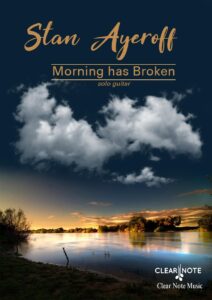 |
|
| Stan Ayeroff – Two arrangements for Guitar Tonight I Celebrate my Love and As Time Goes By |
 |
Stan Ayeroff – Two arrangements for Guitar Tonight I Celebrate my Love and As Time Goes By |
| Stan Ayeroff Cavatina and 20 Movie Themes arr. for solo guitar |
 |
Stan Ayeroff Cavatina and 20 Movie Themes arr. for solo guitar |
| Stan Getz You Stepped Out Of A Dream |
 |
|
| Stan Getz Bossa Nova Tenor Sax |
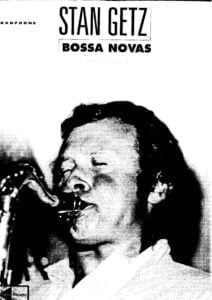 |
|
| Stan Getz Jazz Sambas – Bossa novas |
 |
|
| Stan Getz Omnibook For Bb B Flat Instruments |
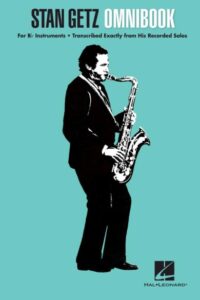 |
Stan Getz Omnibook For B Flat Instruments |
| Stan Getz Omnibook For C instruments Transcribed exactly from his recorded solos |
 |
Stan Getz Omnibook For C instruments Transcribed exactly from his recorded solos |
| Stan Getz Omnibook For Eb E Flat Instruments |
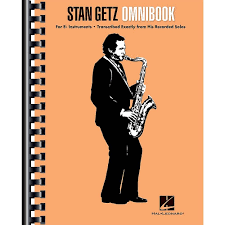 |
Stan Getz Omnibook For E Flat Instruments |
| Stan Getz Sax Solos |
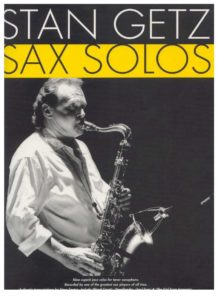 |
Stan Getz Sax Solos |
| Stan Getz Solo Transcriptions |
 |
|
| Stanchinsky 5 Preludes Pour Piano |
 |
|
| Stanchinsky – Prelude in Lydian Mode | Stanchinsky – Prelude in Lydian Mode | |
| Stanchinsky_-_Prelude_in_Lydian_Mode.mscz | ||
| Stand By Me Piano by Ben E. King | Stand-By-Me-Piano | |
| Stand my ground (Within Temptation) | ||
| Standard Pops 1 Guitar Solo Collection with TAB arr. by Michimo Tashima |
 |
Standard Pops 1 Guitar Solo Collection with TAB arr. by Michimo Tashima.pdf |
| Standard Pops 2 Guitar Solo Collection with TAB arr. by Michimo Tashima |
 |
Standard Pops 2 Guitar Solo Collection with TAB arr. by Michimo Tashima |
| Standards 89 Classic Song Piano Vocal Guitar (Budget Books) |
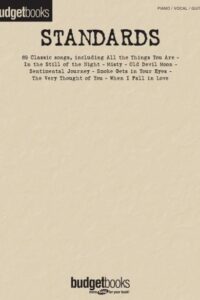 |
Standards 89 Classic Song Piano Vocal Guitar (Budget Books) |
| Standards Real Book The Standards Real Book Jazz In C Version – A Collection of some of the greatest songs of the 20th Century |
 |
The Real Book Jazz Standards In C Version |
| Ständchen Franz Schubert (Guitar Arr.) |
 |
|
| Ständchen – Franz Schubert (Guitar Arr.) (Musescore File).mscz | ||
| Stanislav Borisov Advanced Harmonic Exercises For Jazz Piano |
 |
|
| Stanislav Borisov Harmonic Exercises For Jazz Piano |
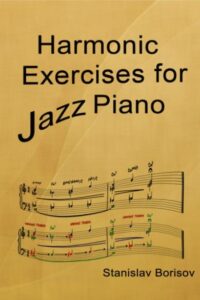 |
|
| Stanislav Borisov Melodic Exercises For Jazz |
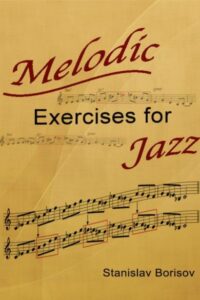 |
|
| Stanley Clarke Collection BASS songbook 16 masterpieces |
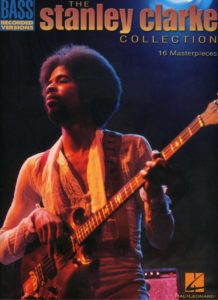 |
|
| Stanley Clarke Songbook |
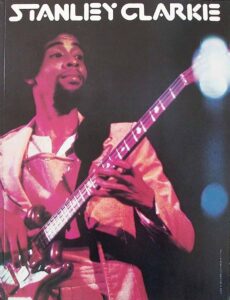 |
Stanley Clarke Songbook Contents |
| Stanley Jordan – Guitar Exercises Pluck To Touch | Stanley Jordan – Guitar Exercises Pluck To Touch | |
| Stanley Jordan – Guitar Exercises Pluck To Touch (Musescore File).mscz | ||
| Stanley Myers – Cavatina (from the flm The Deer Hunter) | Stanley Myers – Cavatina (from the flm The Deer Hunter) | |
| Stanley Yates Classical Guitar Technique from Foundation to Virtuosity (Part 1) Foundation |
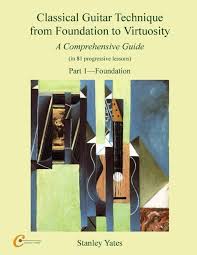 |
|
| Stanley Yates Classical Guitar Technique from Foundation to Virtuosity (Part 2) Mastery and Virtuosity |
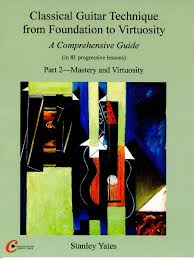 |
|
| Star Dust – Hoagy Carmichael (Musescore File).mscz | ||
| Star Trek – Complete (Themes from all TV shows and movies) Piano Solo |
 |
Star Trek – Complete Theme For Piano Solo |
| Star Trek – The Motion Picture Theme – Jerry Goldsmith |
 |
|
| Star Trek – The Voyage Home by Alenxander Courage and Leonard Roseman (Piano Solo) | Star Trek – The Voyage Home by Alenxander Courage and Leonard Roseman (Piano Solo) | |
| Star Trek EASY Piano Complete Theme Music 2nd Edition Themes From All TV Shows And Movies Easy Piano By Jerry Goldsmith Alexander Courage and Dennis Mccarthy |
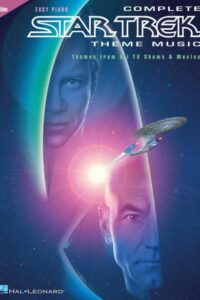 |
Complete Star Trek Theme Music 2nd Edition Themes From All Tv Shows And Movies Easy Piano By Jerry Goldsmith And Dennis Mccarthy |
| Star Trek Highlights From Star Trek Into Darkness Conductor Score Michael Giacchino Arr. By Michael Brown | Star Trek Highlights From Star Trek Into Darkness Conductor Score Michael Giacchino Arr. By Michael Brown | |
| Star Trek Into Darkness (Main Theme) Michael Giacchino |
 |
|
| Star Trek Into Darkness London Calling Michael Giacchino Guitar Tablature |
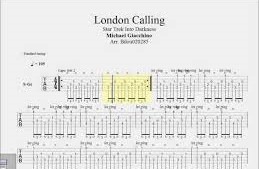 |
|
| Star Trek Into Darkness London Calling Michael Giacchino Piano Solo |
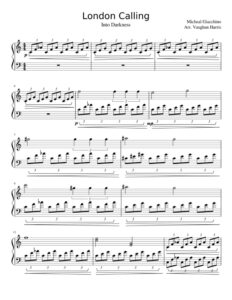 |
|
| Star Trek Music from the motion picture – Piano Solo by Michael Giacchino |
 |
Star Trek Music from the motion picture – Piano Solo by Michael Giacchino |
| Star Trek The Motion Picture – The Enterprise – Jerry Goldsmith (Musescore File).mscz | ||
| Star Wars – Piano Duet (Williams John (Cop)Keveren Phillip (Crt)) |
 |
|
| Star Wars 12 Classics From A Galaxy Far Far Away Piano Solo The Phillip Keveren Series |
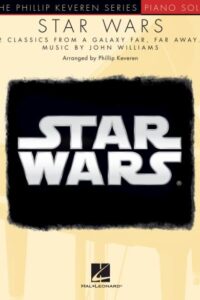 |
Star Wars 12 Classics From A Galaxy Far Far Away Piano Solo The Phillip Keveren Series |
| Star Wars Episode 1 – The Phantom Menace – Duel Of The Fates – John Williams |
 |
|
| Star Wars Episode 5 – The Empire Strikes Back – Main Theme | Star Wars Episode 5 – The Empire Strikes Back – Main Theme | |
| Star Wars Episode 5 – The Empire Strikes Back – The Asteroid Field – John Williams | ||
| Star Wars For Beginning Piano Solo |
 |
Star Wars For Beginning Piano Solo |
| Star Wars The Force Awakens Piano Solo |
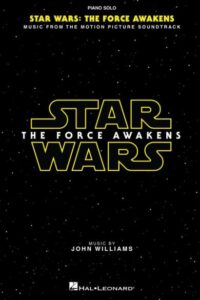 |
Star Wars The Force Awakens Piano Solo |
| Star Wars The Rise Of Skywalker Easy Piano |
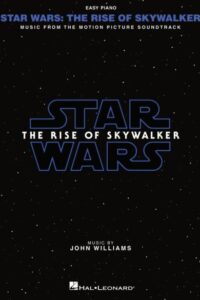 |
Star Wars The Rise Of Skywalker Easy Piano |
| Stardust Crusaders – Jotaros Theme From Jojos Bizarre Adventures |
 |
|
| Stardust Ilan Eshkeris by Ian Sapiro A film score guide (Book) |
 |
|
| Starfox64 – Maintheme – Kondokoji |
 |
|
| Status Quo Rock All Over The World Piano Vocal.mscz | ||
| Status Quo – Rockin All Over The World Guitar Vocal Album Songbook |
 |
Status Quo – Rockin All Over The World Guitar Vocal Album Songbook |
| Status Quo Whatever You Want Guitar Tab | Status Quo Whatever You Want Guitar Tab | |
| Status Quo Guitar Legends Guitar TABs |
 |
Status Quo Guitar Legends Guitar TABs |
| Status Quo In The Army Now (guitar) |
 |
|
| Status Quo Living On An Island Bass Transcription | Status Quo Living On An Island Bass Transcription | |
| Status Quo Rock Til You Drop Guitar Songbook |
 |
Status Quo Rock Til You Drop Guitar Songbook |
| Status Quo Rockin All Over The World |
 |
|
| Stavros Lantsias Waltz of the Eyes |
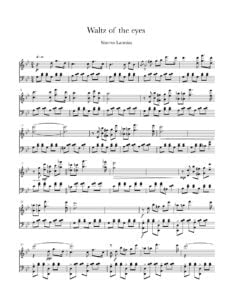 |
|
| Steamboy – Manchester1886 – Steve Jablonsky | ||
| Steamby – Flyinthesky – Steve Jablonsky | ||
| Steely Dan Complete Piano Vocal Guitar Chords |
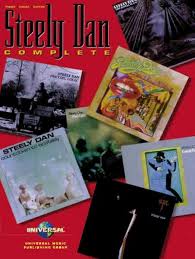 |
Steely Dan Complete Piano Vocal Guitar Chords |
| Steely Dan Reelin In The Year By Brian Sweet (Book Biography) |
 |
|
| Steely Dan Songbook Complete to Aja Piano Vocal Guitar Chords |
 |
Steely Dan Songbook Complete |
| Steely Dan The Best Of Steely Dan Guitar Tablature |
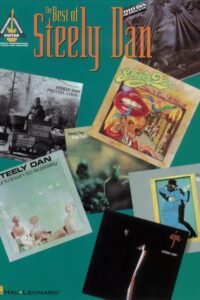 |
Steely Dan The Best Of Steely Dan Guitar Tablature |
| Stefan Schyga Guitar Learn How To Play The Classical Guitar |
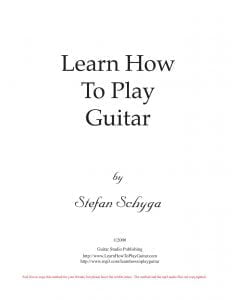 |
|
| Stefano Bollani – Antonia (Antonio Zambrini) spartiti Jazz Transcription |
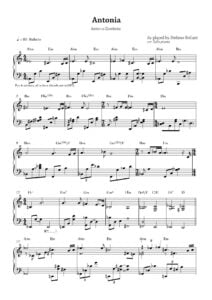 |
|
| Stefano Bollani – Antonia Antonio Zambrini (Jazz Transcription) (Musescore File).mscz | ||
| Stefanuk Misha V. – Jazz Piano Chords |
 |
|
| Steinway Jazz Piano Play Along |
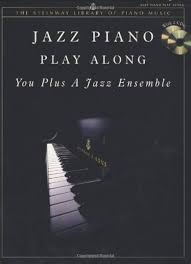 |
Steinway Jazz Piano Play Along |
| Steinway Simply Elegant Piano Volume 1 |
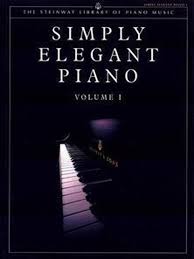 |
Steinway Simply Elegant Piano Volume 1 |
| Stella by Starlight by Ned Washington and Victor Young JAZZ PLAY ALONG LEAD SHEET MUSIC | Stella by Starlight | |
| Stella By Starlight Victor Young (Jazz Standard) (Musescore File).mscz | ||
| Stella, Simone – Canon on the name B.A.C.H. (piano) |
 |
|
| Stella, Simone – Etude-Bizzarria (cello) |
 |
|
| Stella, Simone – Jeux de cromorne (organ) |
 |
|
| Stella, Simone – Jeux de flutes (organ) |
 |
|
| Stella, Simone – Les fleurs du mal (cello&piano) |
 |
|
| Stella, Simone – Victimae Paschali, versetto (organ) |
 |
|
| Stelvio Cipriani Anonimo Veneziano |
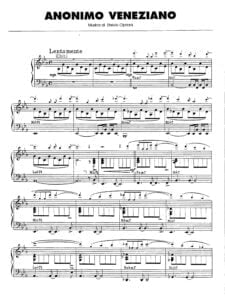 |
|
| Stephan Moccio Tales Of Solace Piano Solo |
 |
Stephan Moccio Tales Of Solace Piano Solo |
| Stephane Boget – Les Secrets Du Hard Rock (FR) avec audio MP3 et Tablature |
 |
secrets du hard rock |
| Stephen Duro – Forget Me Not Waltz (ABRSM Piano) |
 |
|
| Stephen Foster Songbook (published 1854) |
 |
|
| Stephen Goss Guitar Concerto 2012 Complete Score for guitar and orchestra |
 |
|
| Stephen Hills from Helplessly Hoping Guitar Tablature from Crosby, Stills and Nash | Stephen Hills from Helplessly Hoping Guitar Tablature from Crosby, Stills and Nash | |
| Stephen Hough Song Transcriptions for solo piano |
 |
|
| Stephen Sanchez – Until I Found You Sheet Music |
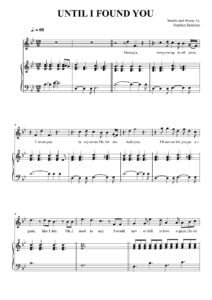 |
|
| Stephen Schwartz Songbook |
 |
Stephen Schwartz Songbook |
| Stephen Sondheim Epiphany from Sweeny Todd The demon barber of Fleet Street (Musicals) | Stephen Sondheim Epiphany from Sweeny Todd The demon barber of Fleet Street | |
| Steve Eckels – 20 Easy Classical Guitar Pieces For Kids with TABs |
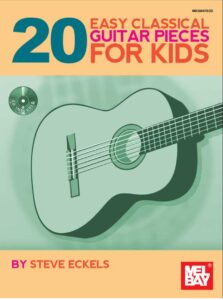 |
Steve Eckels – 20 Easy Classical Pieces For Kids with TABs |
| Steve Green – Find us faithful – Easy Piano |
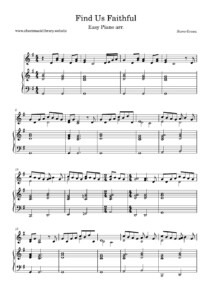 |
|
| Steve Green – Household Of Faith (Piano solo sheet music) |
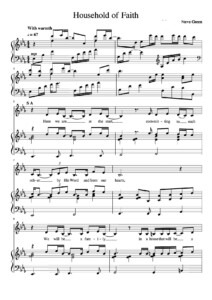 |
|
| Steve Howe – All My Yesterdays (Book) |
 |
|
| Steve Howe Guitar Pieces |
 |
Steve Howe Guitar Pieces |
| Steve Khan Contemporary Chord Khancepts |
 |
|
| Steve Lacy Findings My Experience with the Soprano Saxophone (English, French) (Book) |
 |
|
| Steve Lockwood Essential Techniques Of Jazz And Contemporary Piano |
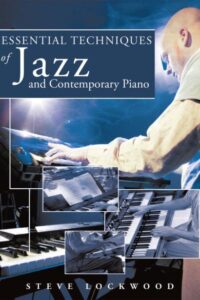 |
|
| Steve Miller Band Young Hearts Complete Greatest Hits Piano Vocal Guitar |
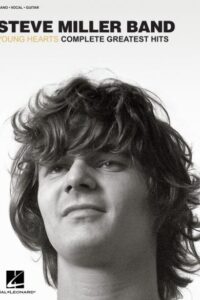 |
Steve Miller Band Young Hearts Complete Greatest Hits Piano Vocal Guitar |
| Steve Morse Southern Steel Guitar Songbook with Tablature |
 |
Steve Morse Southern Steel Guitar Songbook |
| Steve Reich Piano Phase | Steve Reich Piano Phase | |
| Steve Reich – Writings On Music (Book) | Steve Reich – Writings On Music (Book) | |
| Steve Reich Electric Counterpoint Solo |
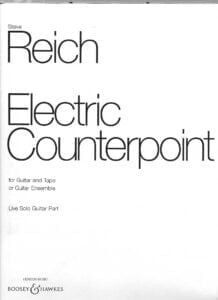 |
|
| Steve Reich Music For 18 Musicians For Ensemble |
 |
|
| Steve Reich Six Pianos | Steve Reich Six Pianos | |
| Steve Vai – Guitar Styles & Techniques (Signature Licks) with Tablature |
 |
Steve Vai – Guitar Styles & Techniques (Signature Licks) |
| Steve Vai Alien Love Secrets Naked Vamps Guitar Tabs signature licks |
 |
Steve Vai Alien Love Secrets Naked Vamps Guitar Tabs signature licks |
| Steve Vai Fire Garden Songbook Guitar Tabs |
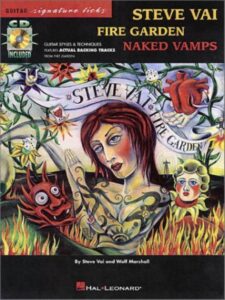 |
|
| Steve Vai Flexable Leftovers Guitar Tabs |
 |
Steve Vai Flexable Leftovers Guitar Tabs |
| Steve Vai Inviolate Guitar Tablature |
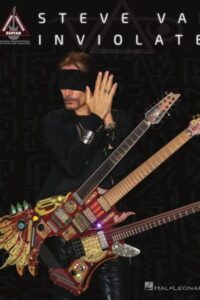 |
Steve Vai Inviolate Guitar Tablature |
| Steve Vai Modern Primitive Guitar Tablature |
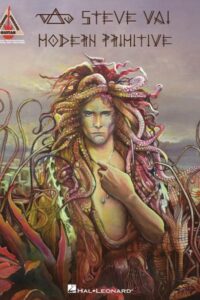 |
Steve Vai Modern Primitive Guitar Tablature |
| Steve Vai Passion Warfare Songbook Guitar Tabs |
 |
|
| Steve Vai The Story Of Light Guitar Tablature |
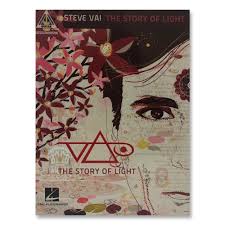 |
Steve Vai The Story Of Light Guitar Tablature |
| Steve Winwood Greatest Hits |
 |
Steve Winwood Greatest Hits |
| Steven Feifke Autumn Leaves sheet music transcription | Steven Feifke Autumn Leaves sheet music transcription | |
| Steven Feifke Confirmation sheet music transcription |
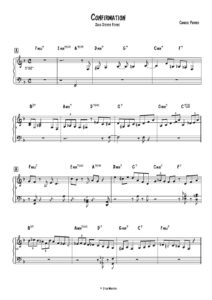 |
|
| Steven Feifke Tenor Madness sheet music transcription |
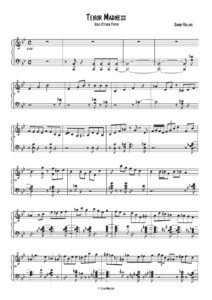 |
|
| Stevie Nicks – Greatest Hits (Songbook) – Piano Vocal Guitar Sheet Music) |
 |
Stevie Nicks – Greatest Hits (Songbook) – Piano Vocal Guitar Sheet Music) |
| Stevie Ray Vaughan – Signature Licks – The Guitar Style Of (play along with audio MP3) Guitar Tablature Songbook |
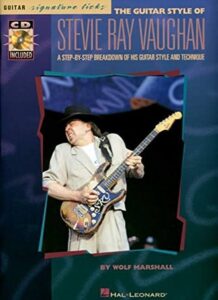 |
Signature Licks – The Guitar Style Of Stevie Ray Vaughan |
| Stevie Ray Vaughan Plays Slow Blues Guitar TAB |
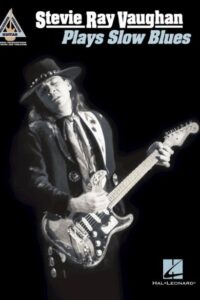 |
Stevie Ray Vaughan Plays Slow Blues Guitar TAB |
| Stevie Wonder Isn’t She Lovely (As Played By Terrence Shider) |
 |
|
| Stevie Wonder – Don’t You Worry Bout A Thing | ||
| Stevie Wonder – Higher Ground | ||
| Stevie Wonder – I Just Called To Say I Love You | ||
| Stevie Wonder – Isn’t She Lovely Piano Vocal Guitar chords |
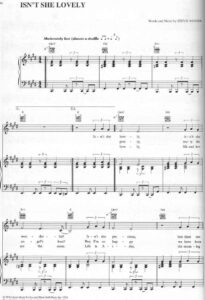 |
|
| Stevie Wonder – Isnt She Lovely | ||
| Stevie Wonder – Knocks Me Off My Feet | ||
| Stevie Wonder – Lately | ||
| Stevie Wonder – Master Blaster (Jammin) El. Bass TAB sheet music |
 |
|
| Stevie Wonder – Master Blaster (Jammin) Guitar TABS & El. Bass sheet music |
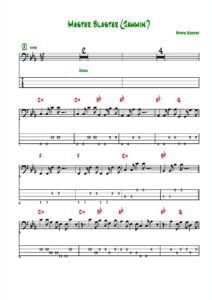 |
|
| Stevie Wonder – Master Blaster (Jammin) Piano sheet music | Stevie Wonder – Master Blaster (Jammin) Piano sheet music | |
| Stevie Wonder – My Cherie Amour | ||
| Stevie Wonder – Signed Sealed Delivered | ||
| Stevie Wonder – Songs In The Key Of Life (Piano Vocal Songbook) |
 |
Stevie Wonder – Songs In The Key Of Life |
| Stevie Wonder – Superstition | ||
| Stevie Wonder – The Best of |
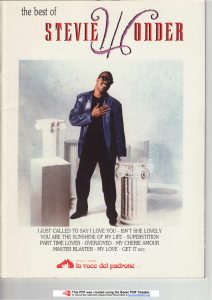 |
Stevie Wonder – The Best of |
| Stevie Wonder – The Sound Of Stevie Wonder His Words And Music Book by James E. Perone Book |
 |
|
| Stevie Wonder – The Stevie Wonder Anthology |
 |
Stevie Wonder – The Stevie Wonder Anthology |
| Stevie Wonder – The Stevie Wonder Collection (Piano and Guitar) |
 |
The Stevie Wonder Collection (Piano and Guitar) |
| Stevie Wonder – You and I (piano solo sheet music) | Stevie Wonder – You and I (piano solo sheet music) | |
| Stevie Wonder – You Are The Sunshine Of My Life | ||
| Stevie Wonder – You Are The Sunshine Of My Life (piano solo) | Stevie Wonder – You Are The Sunshine Of My Life (piano solo) |
